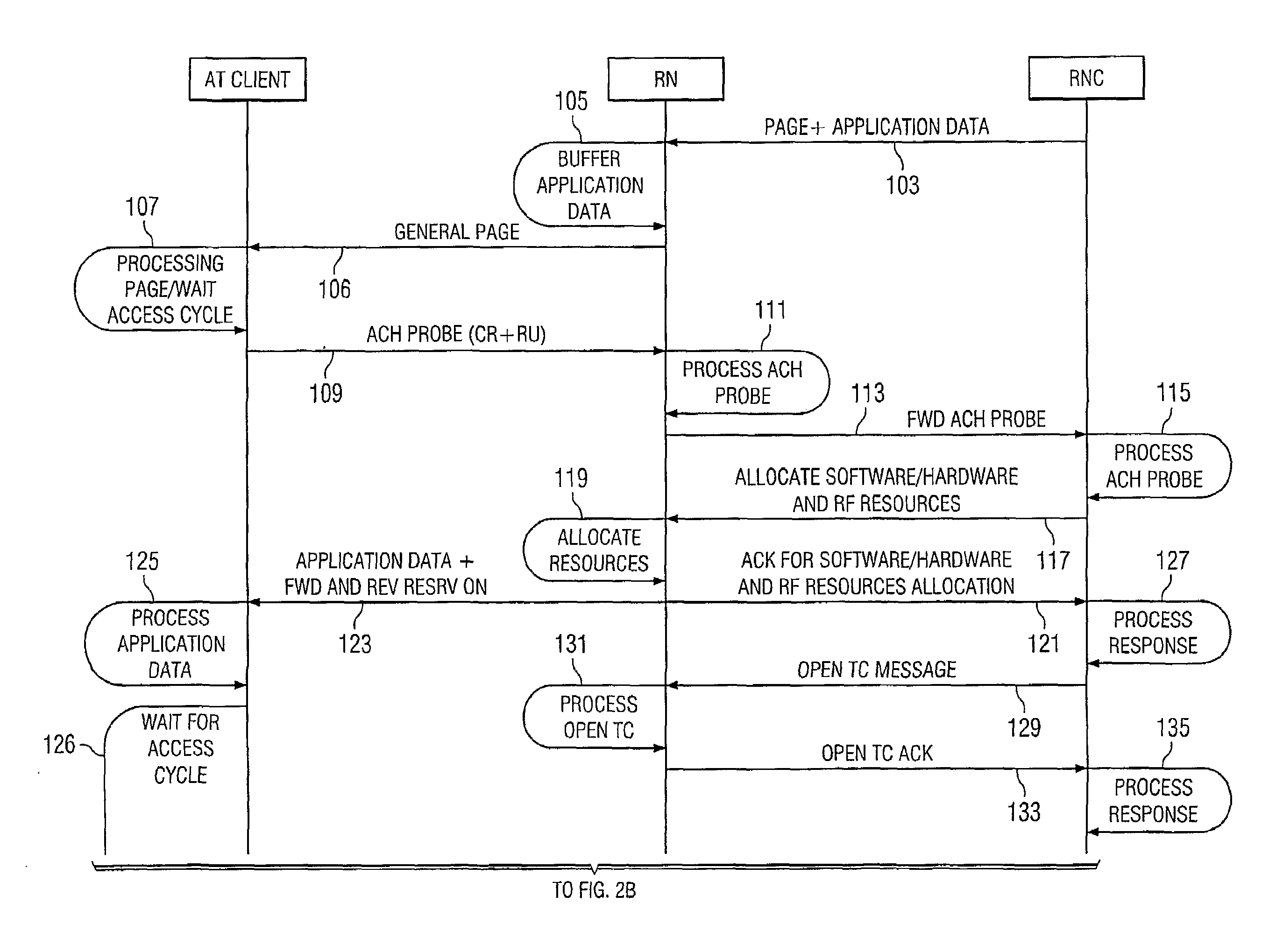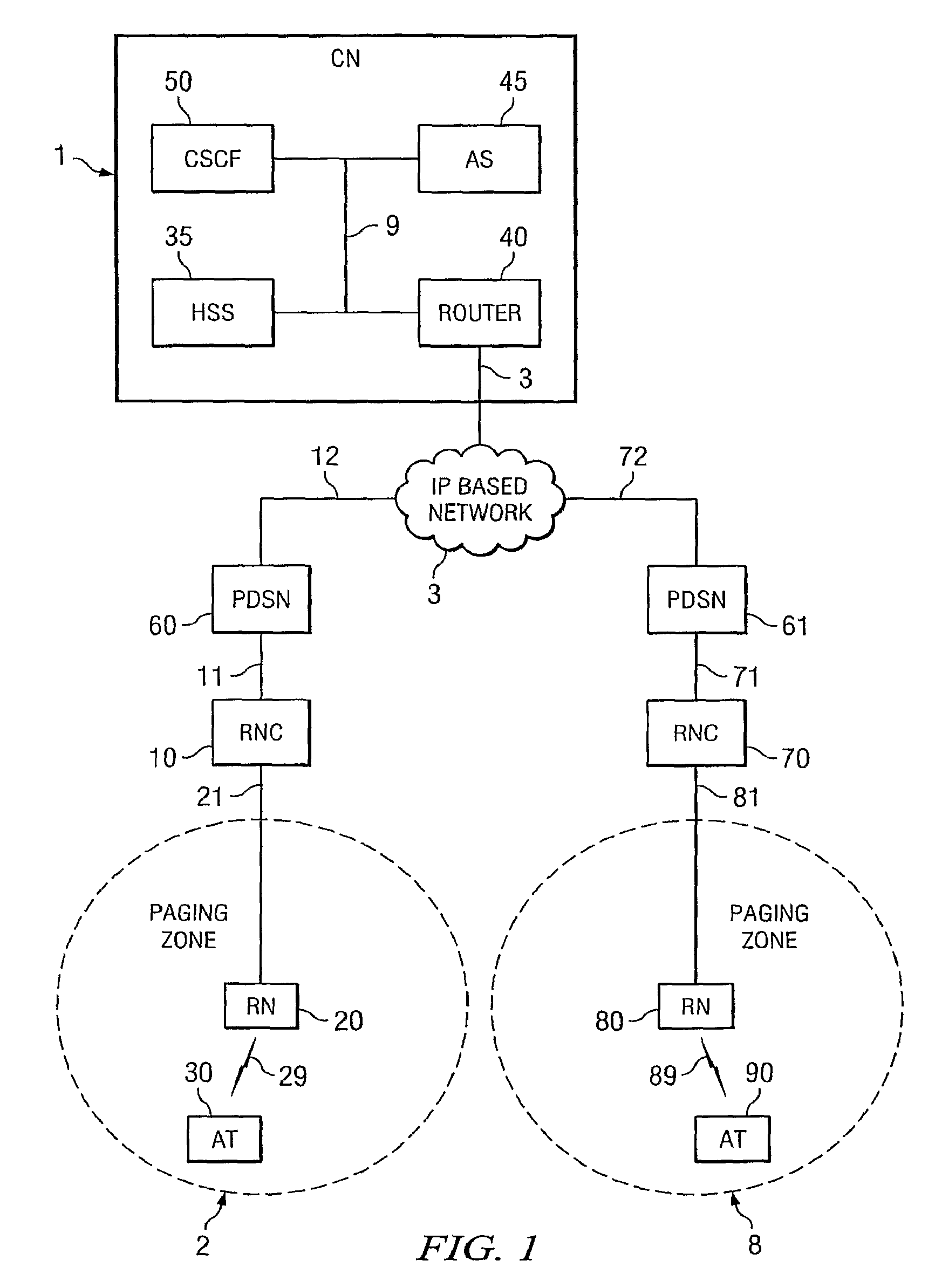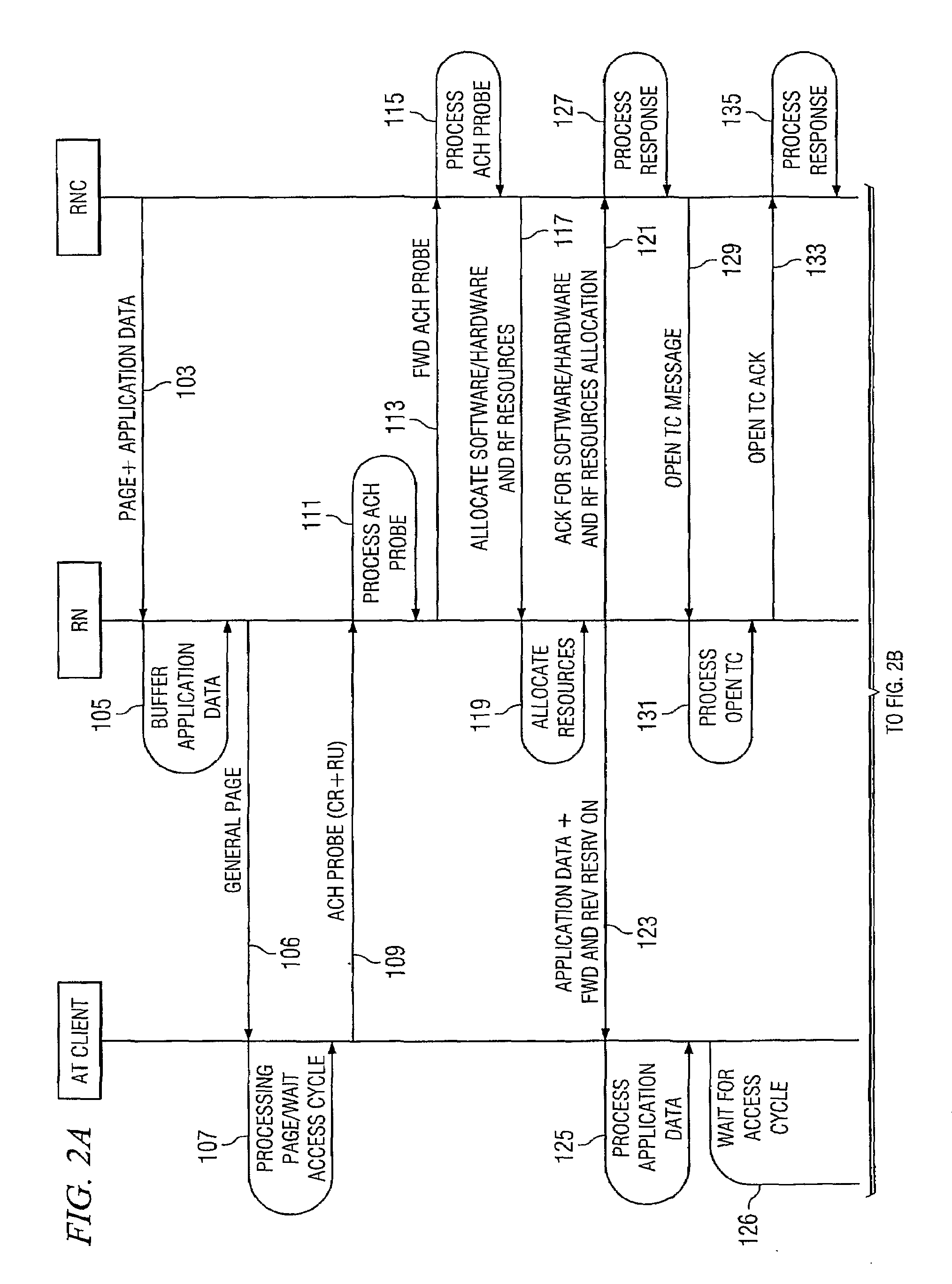Radio resource reservation for wireless networks
a wireless network and resource reservation technology, applied in the direction of wireless commuication services, network traffic/resource management, electrical equipment, etc., can solve the problems of large collection of incompatible computer networks, high data rate transfers, and computers on these different networks could not communicate with other computers across their network boundaries, so as to reduce the setup time and improve the performance of the system, the effect of reducing the number of times
- Summary
- Abstract
- Description
- Claims
- Application Information
AI Technical Summary
Benefits of technology
Problems solved by technology
Method used
Image
Examples
Embodiment Construction
[0025]FIG. 1 shows a CDMA wireless telecommunications system compatible with the invention. The IP based network 3 is coupled to a PDSN 60 via communication link 12 and to another PDSN 61 via communication link 72. The PDSN 60 and PDSN 61 are also connected to RNC 10 and RNC 70 via communication links 11 and 71, respectively. The RNC 10 is in turn coupled to a Radio Network (RN) 20, supporting wireless communications within a paging zone 2, via communication line 21. The RN 20 is coupled to an Access Terminal (AT) 30 via wireless communication link 29. The RN 20 supports communication within a cell site configured into one or more paging zones 2. The RNC 70 is in turn coupled to a Radio Network (RN) 80, supporting wireless communications within a paging zone 8, via communication line 81. The RN 80 is coupled to an Access Terminal (AT) 90 via wireless communication link 89. The RN 80 supports communication within a cell site configured into one or more paging zones 8.
[0026]The CN 1 c...
PUM
 Login to View More
Login to View More Abstract
Description
Claims
Application Information
 Login to View More
Login to View More - R&D
- Intellectual Property
- Life Sciences
- Materials
- Tech Scout
- Unparalleled Data Quality
- Higher Quality Content
- 60% Fewer Hallucinations
Browse by: Latest US Patents, China's latest patents, Technical Efficacy Thesaurus, Application Domain, Technology Topic, Popular Technical Reports.
© 2025 PatSnap. All rights reserved.Legal|Privacy policy|Modern Slavery Act Transparency Statement|Sitemap|About US| Contact US: help@patsnap.com



